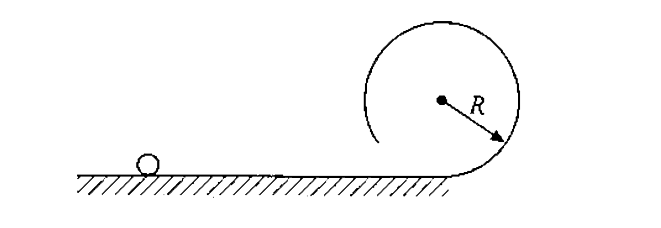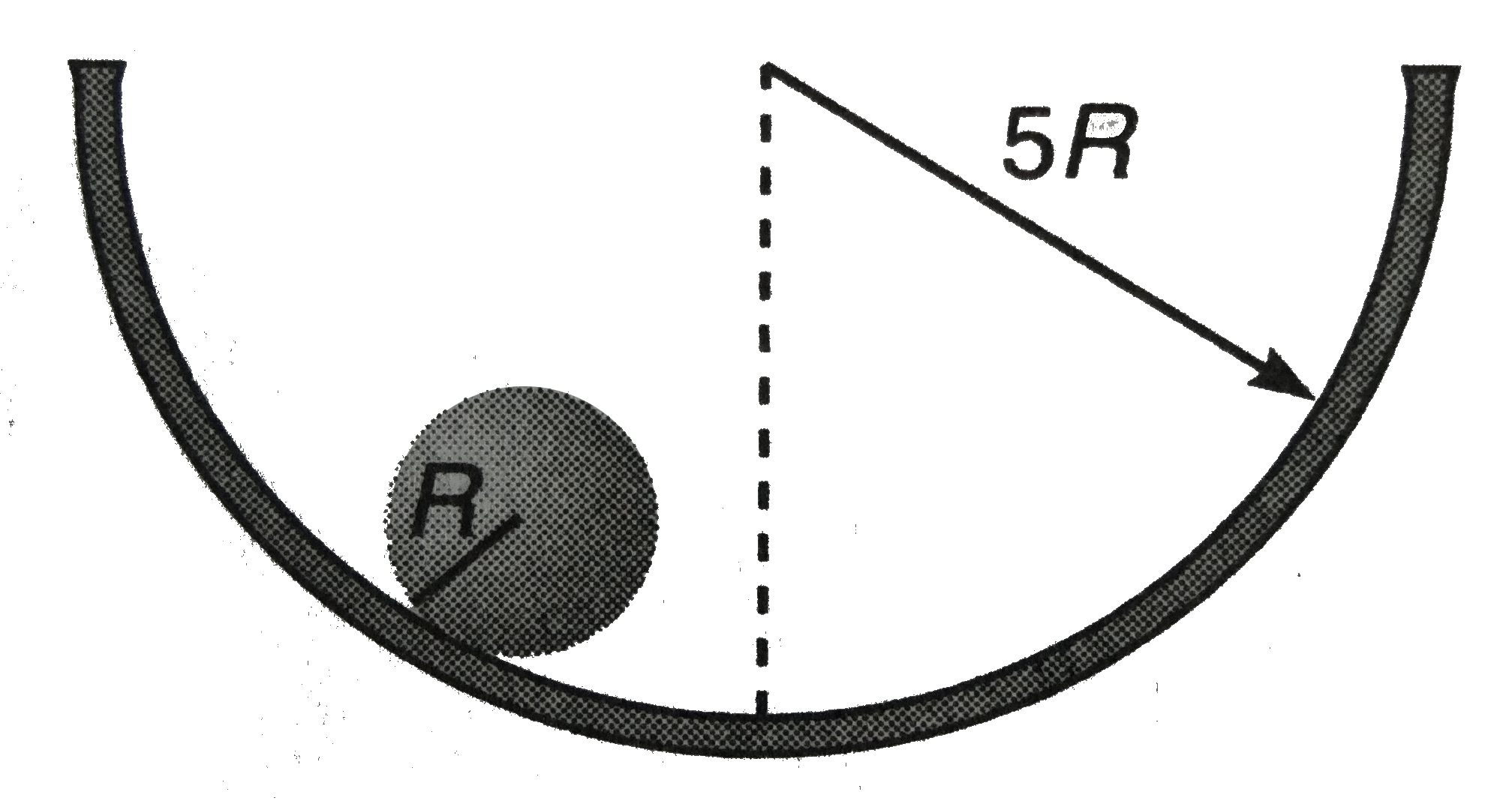A spherical ball of mass m and radius r rolls without slipping on a rough concave surface of large radius R. It makes small oscillations about the lowest point. Find the time period.
The correct Answer is:B
To find the time period of a spherical ball of mass m and radius r rolling without slipping on a rough concave surface of large radius R, we can follow these steps:
Step 1: Understand the System
The spherical ball is rolling without slipping on a concave surface. The motion of the ball can be approximated as simple harmonic motion (SHM) when it makes small oscillations about the lowest point.
Step 2: Identify Relevant Parameters
- Mass of the ball: m
- Radius of the ball: r
- Radius of the concave surface: R
- Angular displacement: θ
- Gravitational acceleration: g
Step 3: Relate Angular Displacement and Acceleration
For small oscillations, we can approximate the motion as that of a body on an inclined plane. The acceleration of the center of mass of the rolling ball can be expressed as:
acm=gsinθ1+r2k2
where k is the radius of gyration.
Step 4: Moment of Inertia and Radius of Gyration
For a solid sphere, the moment of inertia I is given by:
I=25mr2
The radius of gyration k is related to the moment of inertia by:
k2=Im=25r2
Step 5: Substitute for Radius of Gyration
Substituting k2 into the acceleration equation gives:
acm=gsinθ1+r225r2=gsinθ1+52=5gsinθ7
Step 6: Relate Linear and Angular Acceleration
The linear acceleration acm is related to the angular acceleration α by:
acm=α(R−r)
Thus, we have:
α=acmR−r=5gsinθ7(R−r)
Step 7: Approximate for Small Angles
For small angles, sinθ≈θ. Therefore:
α=5gθ7(R−r)
Step 8: Use the Formula for Time Period
The time period T for small oscillations is given by:
T=2π√θα
Substituting for α:
T=2π√7(R−r)5g
Final Answer
Thus, the time period of the oscillations of the spherical ball is:
T=2π√7(R−r)5g
---
The spherical ball is rolling without slipping on a concave surface. The motion of the ball can be approximated as simple harmonic motion (SHM) when it makes small oscillations about the lowest point.
- Mass of the ball: m
- Radius of the ball: r
- Radius of the concave surface: R
- Angular displacement: θ
- Gravitational acceleration: g
For small oscillations, we can approximate the motion as that of a body on an inclined plane. The acceleration of the center of mass of the rolling ball can be expressed as:
acm=gsinθ1+r2k2
where k is the radius of gyration.
For a solid sphere, the moment of inertia I is given by:
I=25mr2
The radius of gyration k is related to the moment of inertia by:
k2=Im=25r2
Substituting k2 into the acceleration equation gives:
acm=gsinθ1+r225r2=gsinθ1+52=5gsinθ7
The linear acceleration acm is related to the angular acceleration α by:
acm=α(R−r)
Thus, we have:
α=acmR−r=5gsinθ7(R−r)
For small angles, sinθ≈θ. Therefore:
α=5gθ7(R−r)
The time period T for small oscillations is given by:
T=2π√θα
Substituting for α:
T=2π√7(R−r)5g
Thus, the time period of the oscillations of the spherical ball is:
T=2π√7(R−r)5g
Topper's Solved these Questions
- SIMPLE HARMONIC MOTIONBOOK - HC VERMACHAPTER - SIMPLE HARMONIC MOTIONEXERCISE - Objective-2
2 Videos
- ROTATIONAL MECHANICSBOOK - HC VERMACHAPTER - ROTATIONAL MECHANICSEXERCISE - Exercises
86 Videos
- SOME MECHANICAL PROPERTIES OF MATTERBOOK - HC VERMACHAPTER - SOME MECHANICAL PROPERTIES OF MATTEREXERCISE - Exercises
32 Videos
Similar Questions
A ring of mass m and radius r rolls without slipping on a fixed hemispherical surface of radius R as shown. The time period of small oscillations of ring is 2π√n(R−r)3g then find the value of n.

View SolutionA small block oscillates back and forth on a smooth concave surface of radius R. Find the time period of small oscillation.

View Solution
Knowledge Check
A solid sphere of mass m and radius R rolls without slipping on a horizontal surface such that vc.m.=v0.
AThe kinetic energy of rotation is 15mv20.BThe total kinetic energy is 710mv20.CThe mechanical energy (assume the ground as reference) is mgR+710mv20.DAll options are correct.A symmetrical body of mass M and radius R is rolling without slipping on a horizontal surface with linear speed v. Then its angular speed is
Av/RBContinuously increasingCDependent on mass MDIndependent of radius (R)A solid cylinder of mass M and radius R rolls without slipping on a flat horizontal surface. Its moment of inertia about the line of contact is ?
AMR22BMR2C32MR2D2MR2
A small spherical marble of mass m and radius r is rolling without slipping on a rough track with speed v.The track further is in the shape of a vertical circle of radius R as shown in figure-5.144. With what minimum linear speed the marble is rolling so that it completely goes round the circle on the circular part of track.

View SolutionA solid sphere (radius=R) rolls without slipping in a cylindrical throuh(radius=5R). Findthe time period of small oscillations.

View SolutionA small block oscillates back and forth on as smooth concave surface of radius R figure. Find the time period of small oscillation.

View SolutionA spherical ball of radius r and mass m is rolling without slipping on a horizontal table. Calculate the percentage of KE, which is translational.
View SolutionA solid cylinder of mass M and radius R rolls down an inclined plane of height h without slipping. The speed of its centre when it reaches the bottom is.
View Solution
